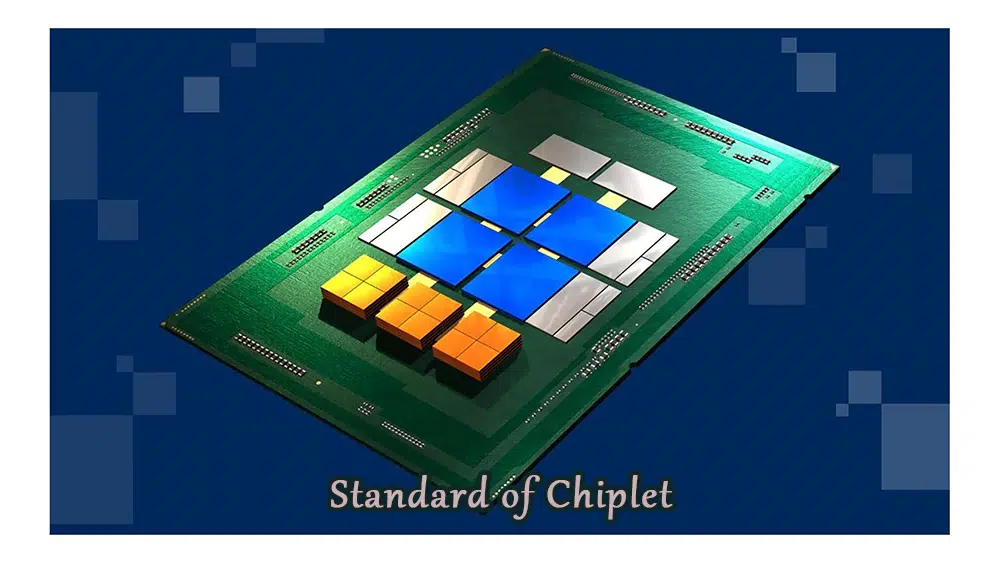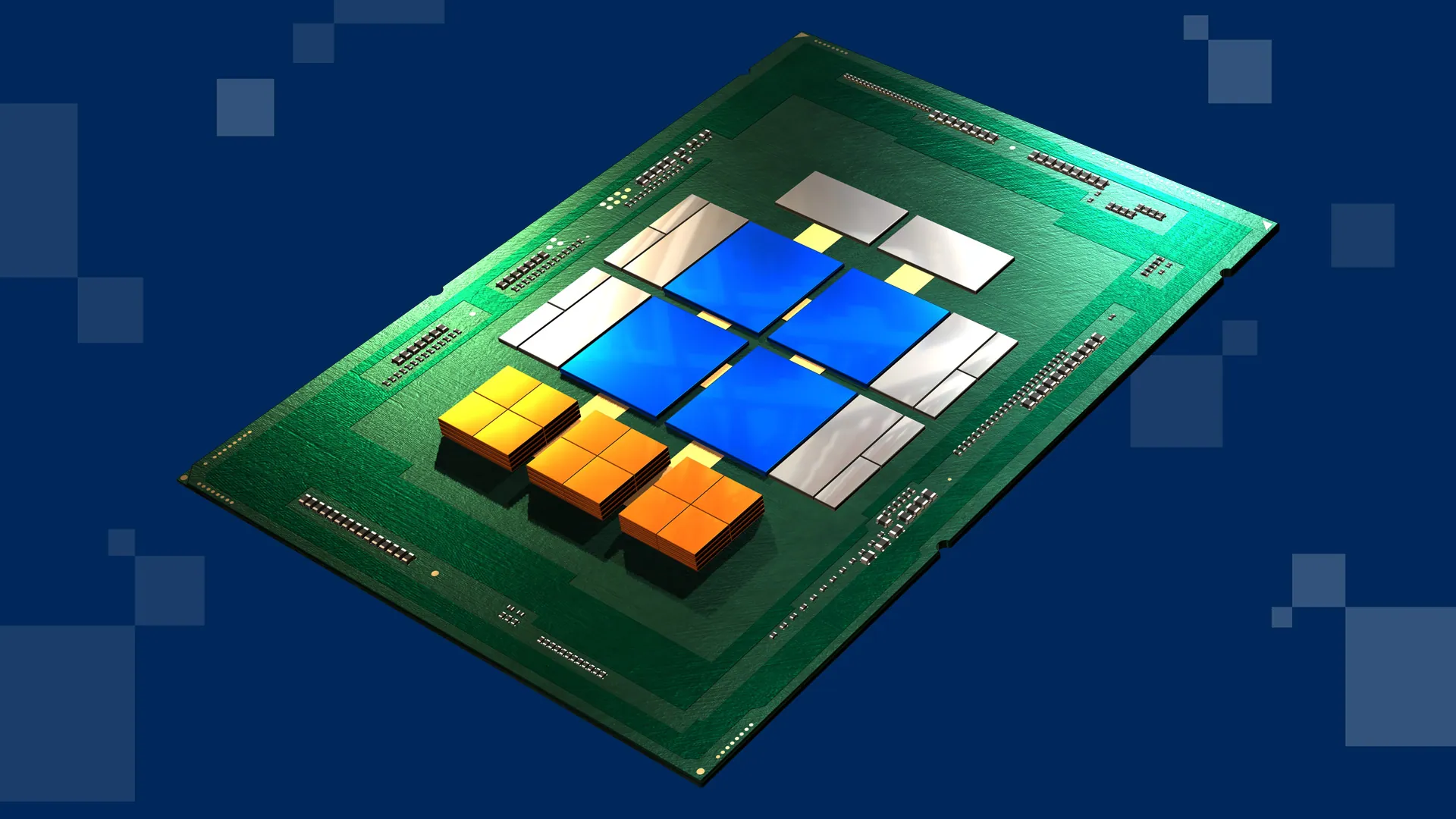Introduction:
In the fast-paced world of semiconductor technology, innovation drives progress. AMD, a trailblazer in chiplet-based designs, is at the forefront of this evolution. Their latest endeavor, the Universal Chiplet Interconnect Express (UCIe) specification, promises to reshape the industry landscape by fostering a whole new ecosystem of custom multi-chiplet designs.
UCIe is an open standard for connecting multiple chiplets (miniaturized silicon components) within a single package. Imagine it like a high-speed highway system for data traveling between these tiny building blocks on a computer chip.

Here’s a breakdown of what UCIe offers:
Increased Performance: This allows chiplets from different manufacturers to work together seamlessly, enabling efficient data transfer and potentially boosting overall chip performance.
Customization: By using chiplets, designers can mix and match components optimized for specific tasks, leading to more tailored chips for various applications.
Open Standard: Being an open standard, this fosters collaboration and innovation across the chip-making industry.
In this detailed blog post, we’ll explore the significance of UCIe and its implications for the future of computing.
Follow us on Linkedin for everything around Semiconductors & AI
The Evolution of Chiplet Designs:
AMD’s journey towards chiplet-based architectures began several years ago, fueled by the need for higher core counts and superior performance.
Recognizing the limitations of traditional monolithic designs, AMD pioneered the use of chiplets, enabling scalable solutions with unparalleled efficiency.
With UCIe, AMD is poised to take this concept to new heights, paving the way for a modular approach to semiconductor design.
Read More:Top 10 Chip Providers Powering the Data Center Industry – techovedas
UCIe and AMD
It’s important to clarify that UCIe isn’t specific to AMD. While AMD is a supporter and contributor to the UCIe standard, it’s actually an open industry consortium including companies like Intel, Arm, and others.
The significance of UCIe for AMD, and the industry as a whole, lies in its potential to revolutionize chiplet technology:
Embracing Openness: AMD previously relied on its proprietary Infinity Fabric for chiplet communication. UCIe offers a more collaborative approach, potentially leading to wider adoption and faster innovation.
Flexibility and Choice: UCIe allows AMD to integrate chiplets from various vendors, enabling them to create more specialized and competitive chip designs.
Futureproofing: By adopting an open standard, AMD positions itself well for future advancements in chiplet technology.
Here’s a point to consider: While AMD has expressed interest in UCIe, it hasn’t yet confirmed using it in their products. However, their support for the standard signifies its potential to be a game-changer in chip design.
The Role of Infinity Fabric and the Need for Standardization:
Imagine a bunch of mini factories (chiplets) that all need to communicate with each other to build a final product (computer chip). Previously, AMD had its own private messenger service (Infinity Fabric) for these chiplets to communicate.
Here’s how UCIe changes things:
- Proprietary vs Open: Infinity Fabric was like a closed club, only AMD’s chiplets could use it. UCIe is like a public messaging system, any chiplet maker can join the conversation. This openness can lead to:
- Wider Adoption: More companies can design chiplets compatible with a wider range of devices, potentially making UCIe the standard for chiplet communication.
- Faster Innovation: With more players involved, ideas and improvements can flow more freely, potentially accelerating the development of chiplet technology.
Here’s an analogy: Think of VHS vs. Blu-ray. VHS was a great format, but it was proprietary. Blu-ray became the standard because it was open, leading to faster innovation and wider adoption. UCIe has the potential to be the Blu-ray of chiplet communication.
Key Features of UCIe:
UCIe boasts a comprehensive set of features designed to meet the demanding requirements of modern computing systems.
The specification includes a high-speed physical layer, robust protocol stack, and rigorous compliance testing procedures. With support for up to 64 lanes at 32 GT/s, UCIe offers unparalleled bandwidth density, enabling efficient data transfer and low-latency communication between chiplets.
This standardized approach empowers semiconductor manufacturers to develop custom solutions tailored to their specific needs, driving innovation and differentiation.
Read More:Forget Nvidia GPUs, This Groq AI Chip Claims to Be 10x Faster for Language Models – techovedas
Industry Impact and Future Outlook:
The introduction of UCIe marks a significant milestone in the evolution of chiplet-based architectures.
UCIe fosters a standardized ecosystem for chiplet integration. This fosters collaboration, accelerates innovation, and spurs competition.
More companies adopting UCIe-compatible chiplets are expected. This will lead to a proliferation of custom platforms and specialized solutions. These solutions will address the diverse needs of modern computing.
Read More: 256% Import: China’s Chipmaking Tool Purchase Skyrocket Amidst US Sanctions – techovedas
Conclusion:
In conclusion, AMD’s UCIe specification represents a quantum leap forward in semiconductor design.
By unlocking the potential of custom multi-chiplet designs, UCIe empowers companies to innovate like never before, driving progress and shaping the future of computing.
As the industry embraces this new era of modularity and customization, we can expect to see a wave of groundbreaking products and technologies that will redefine the boundaries of what’s possible.
With UCIe, the future is limitless, and the journey towards a more interconnected and efficient computing landscape has only just begun.



